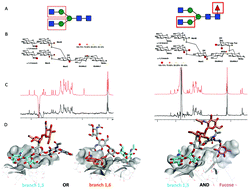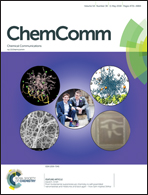The recognition of glycans by protein receptors. Insights from NMR spectroscopy
Abstract
Carbohydrates (glycans, saccharides, sugars) are everywhere. In fact, glycan–protein interactions are involved in many essential processes of life and disease. The understanding of the key structural details at the atomic and molecular level is of paramount importance to effectively design molecules for therapeutic purposes. Different approximations may be employed to decipher these molecular recognition processes with high resolution. Advances in cryo-electron microscopy are providing exquisite details on different biological mechanisms involving sugars, while better and better protocols for structural refinement in the application of X-ray methods for protein–sugar complexes and glycoproteins are also permitting fantastic advances in the glycoscience arena. Alternatively, NMR spectroscopy remains as one of the most rewarding techniques to explore protein–carbohydrate interactions. In fact, given the intrinsic dynamic nature of saccharides, NMR can afford exquisite structural information at the atomic detail, not accessible by other techniques. However, the access to this information is sometimes intricate, and requires careful analysis and well-defined strategies. In this review, we have highlighted these issues and presented an overview of different modern NMR approaches with a focus on the latest developments and challenges.



 Please wait while we load your content...
Please wait while we load your content...